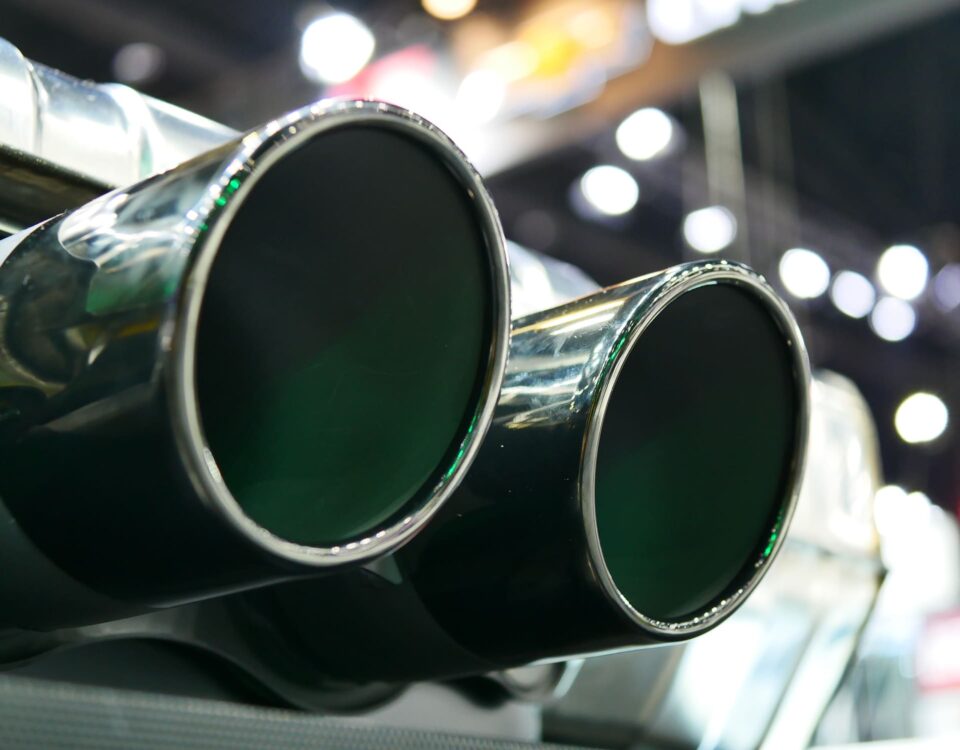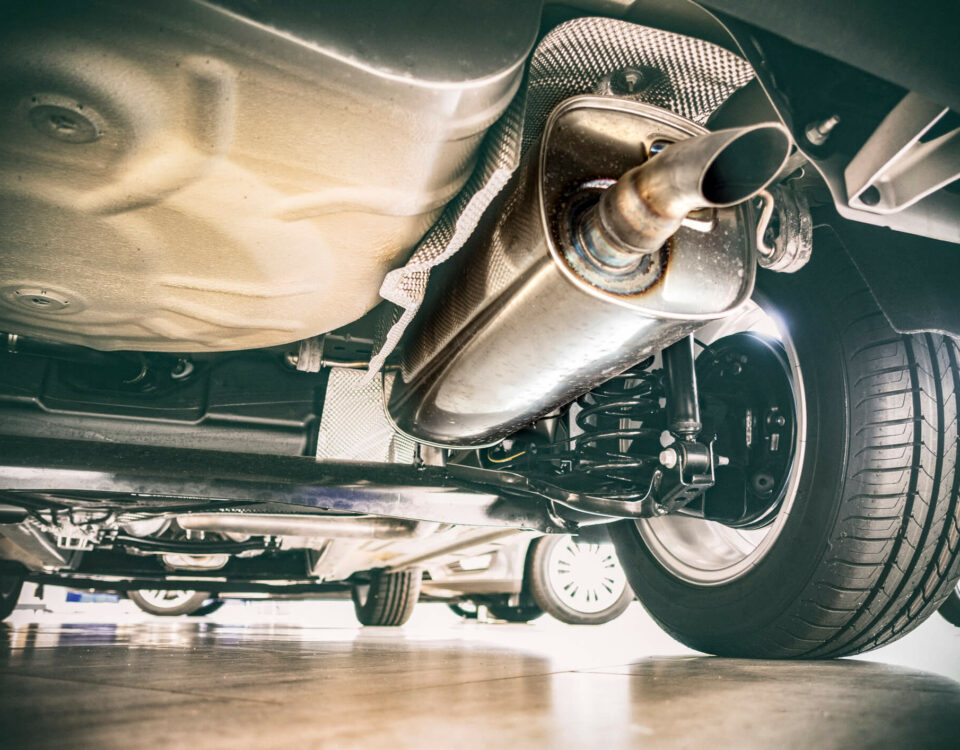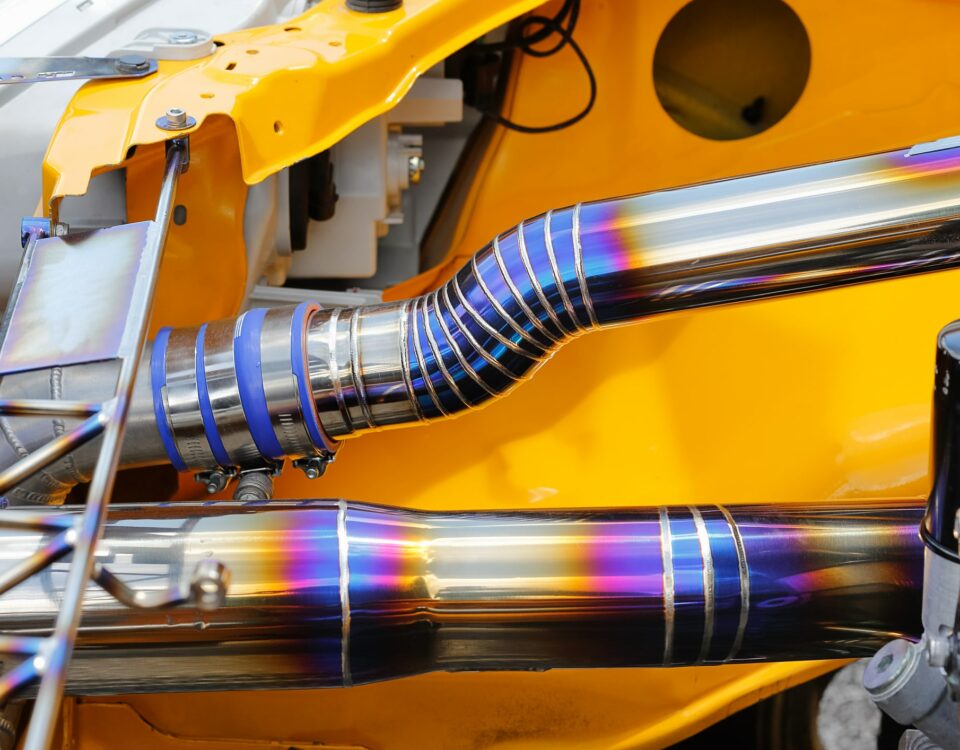Why Do Cars Have Two Exhaust Pipes?
In the most basic terms, your vehicle’s engine is designed to suck in air and fuel, transform them into energy and waste products (exhaust fumes and other pollutants), then pump them safely outside the vehicle. To this end, modern cars are fitted with sophisticated exhaust systems that maximise engine efficiency and help to reduce the environmental impact of exhaust fumes with special filters.
These exhaust systems can help improve your car’s performance by allowing your engine to easily push exhaust gases out and replace them with fresh air, so many exhausts are designed with two pipes for the most efficient throughput of gases. However, there are a huge array of exhaust system designs, from stock single-pipe exhaust systems to performance-enhancing dual stainless steel exhaust systems.
What are dual exhausts, and what do dual exhausts do?
By definition, dual exhaust systems use two exhaust headers or manifolds, two mufflers, two separate tailpipes and two (or more) catalytic converters. As the name implies, dual exhaust setups must be made of two separate exhaust systems – sometimes connected by ‘H’ or ‘X’ shaped pipes – to be considered true dual exhaust systems.
However, many vehicles are fitted with exhaust designs that use a single pipe design split with a ‘Y’ pipe near the end of the system to add visual appeal and the illusion of dual exhaust, though these are NOT true dual exhausts. If you didn’t know any better, you might think that all this is much ado over an extra pipe, but dual exhaust systems offer a variety of performance benefits, as well as style to your car.
Purpose of dual exhaust systems
By adding two exhaust systems to your car, your vehicle can quickly and easily vent exhaust gases, allowing your engine to ‘breathe’ better, decreasing back pressure and increasing horsepower. Compared to single exhaust setups (which often develop bottlenecks, restricting gas flow), dual exhaust systems offer dramatically increased gas flow, allowing your engine to function more efficiently.
Pros and cons of dual exhaust systems
Pros
- Provides additional performance gains
- Reduces backpressure
- Increases exhaust flow
If you’re interested in modifying your car, a dual exhaust system is a great way to improve energy performance and enhance the sound of your engine. What’s more, fitting a dual exhaust system to a larger engine (especially those with turbochargers) gives you much more dramatic results, allowing your engine to work to its full potential.
Cons
- More expensive than single exhaust systems
- Heavier
- Can be inefficient
Unfortunately, dual exhaust systems are a double-edged sword, as they add weight and cost to your vehicle, not just power and style. While dual exhaust systems can add a serious performance boost and a throaty rumble to match, they are heavier than single exhaust setups and costly to install, so make sure to get an expert opinion on whether doubling up is the right choice for your vehicle.
Are dual exhausts louder than single exhausts?
If you’re looking to dominate the motorways with a throaty roar every time you open the throttle or turn heads whenever you drive down the street, then a dual exhaust system is the way to go. Thanks to lower back pressure and more efficient venting of gas from the engine, dual exhaust systems are louder and have more of a throaty rumble than single exhausts, making them highly desirable to motorists who like to show off with noisy cars.
Sure, a rip-roaring exhaust won’t make your car go faster or give you more miles to the gallon, but if you’re the kind of person who loves to hear a powerful engine purr, then go ahead and double your exhausts. Fortunately, if you want to improve your car’s performance without the extra decibels, you can decrease the sound of a dual exhaust with an ‘H’ pipe setup or additional mufflers on your exhausts.
How much horsepower do dual exhausts add?
Because no two cars are created equal, it’s hard to say how many horses you could gain by installing a dual exhaust system, but the lowered backpressure and improved throughflow is sure to make a positive change to the performance of your car. These gains are especially noticeable on larger, turbo-charged engines, which may struggle to generate the energy needed to vent waste gases from a single exhaust system effectively.
By some estimates, fitting a dual exhaust system to your car could add more than 30 horsepower to your car by allowing your engine to vent exhausts more easily and increasing throughput. However, your results may vary greatly depending on the specs of your car and the quality of your new dual exhaust system, so you shouldn’t take that 30 horsepower figure as a given.
Conclusion
If you’re looking to increase the performance of your car, dial up the decibels or pimp your exhaust pipes for style points, then a dual exhaust system could be right for you. If you’d like to learn more about dual exhaust systems, see what you could gain by installing one in your car or book a visit to our garage, get in touch with DKU Performance today.



